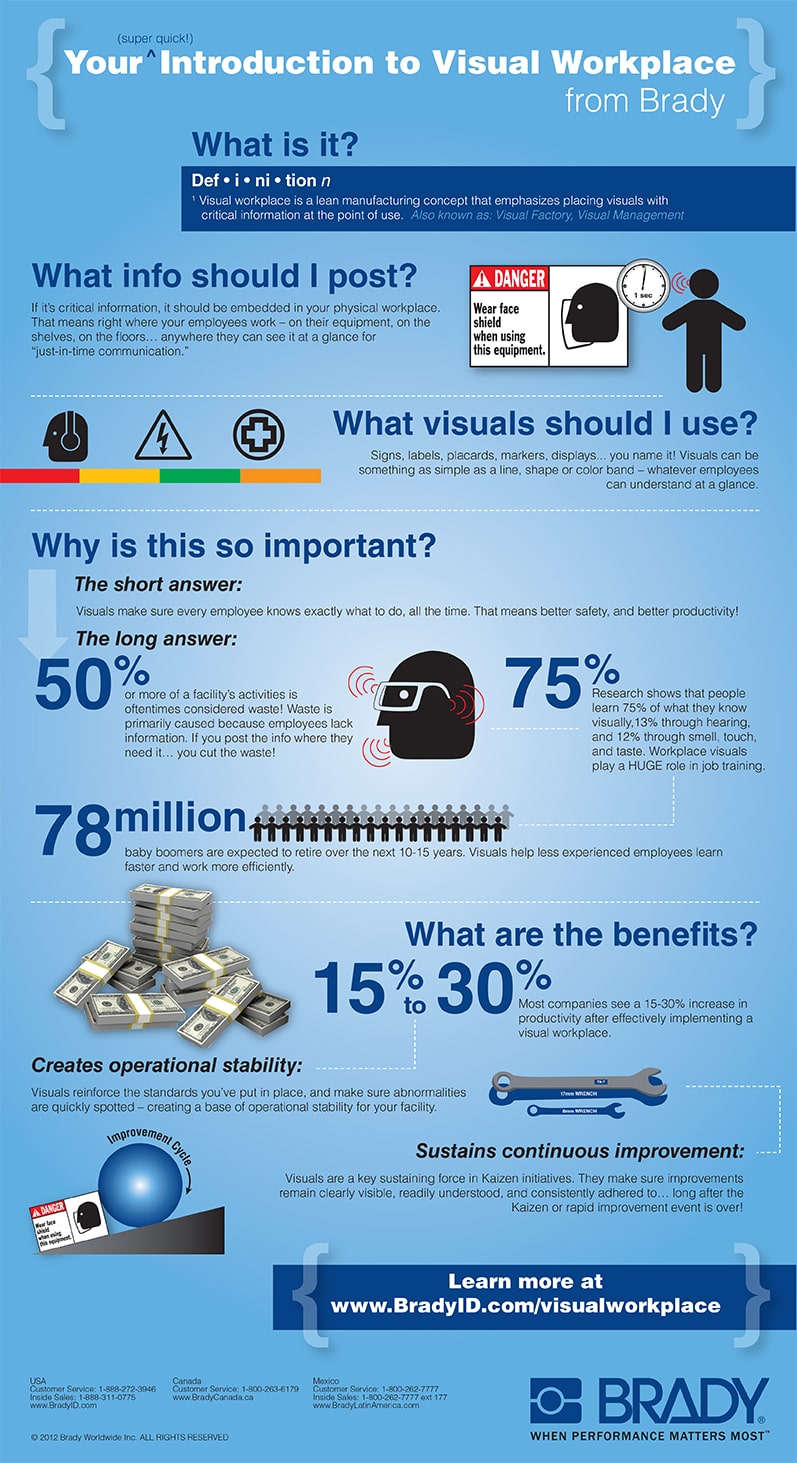
Blog > Safety > Safety You Can See: The Visual Workplace
Safety You Can See: The Visual Workplace
3/15/22 | Rexel

Blog > Safety > Safety You Can See: The Visual Workplace
3/15/22 | Rexel
The visual workplace is a concept closely related to lean manufacturing, but you don't have to adopt all lean principles to take advantage of it to improve workplace safety. Light travels much faster than sounding, making our visual field one of our first perceptions when entering a new environment. By some estimates, 50% of our brain function is devoted to finding and interpreting visual information. That's why using cues such as color, signs, labels, and tape can help create a safer workspace.

Brady® provides an excellent definition in its Your Introduction to Visual Workplace infographic: "Visual workplace is a lean manufacturing concept that emphasizes placing visuals with critical information at the point of use."
Imagine moving to a new city, and as a part of your welcome, the city gives you training on how to get around. They show you maps, tell you street names, explain how their highway system works, and review every traffic law. You leave your training feeling pretty confident. But then you get on the road and discover there are no signs or traffic lights. Every moment of your drive, you are expected to remember everything you learned in your training to adhere to the law and avoid hurting yourself or someone else. How long do you think you could avoid making a mistake or getting into an accident?
The idea behind the visual workplace is similar to how we label roads and use traffic lights and signs to drive safely. Training is a vital part of any safety process, but relying on training alone won't prevent accidents and injuries.
Gwendolyn Galsworth, Ph.D. developed the concept of the visual workplace in the 1990s, and she is the leading expert on the topic.
"The visual workplace is about answering all the questions that anyone has related to work: questions about what is known as well as unknown; questions spoken out loud as well as those on a sub-vocal level; questions that are commonplace as well as those so specialized that only a few people think to ask them," says Dr. Galsworth.
We can help! We Reach out to our team for guidance and advice. Contact us today!